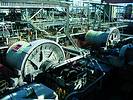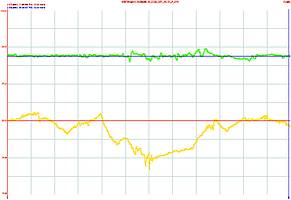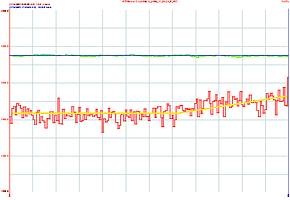
Expert systems have gained acceptance as a means of achieving superior performance from complex milling circuits. Their cost and proprietary nature, however, can sometimes negate the advantages they bring. The answer is to be able to implement expert systems with minimal additional investment and infrastructure and that lend themselves to on-going customisation by being open and non-proprietary.
Process control, diagnostics, troubleshooting and realtime monitoring of assets have become essential in enabling companies to compete effectively and to achieve their profitability goals. The challenge is to identify and use technologies and methods that provide the highest return on investment and that are easily maintainable within the framework of a plant's available engineering resources.
Operations at Impala's UG2 concentrator, about 25 km north of Rustenburg, started in 1991. The current monthly ore throughput is 450 000 tons. Crucial to the successful operation of the plant, are two run-of-mine, FAG (fully autogenous or self-grinding) mills each having a capacity of 380 tons/hour.
The primary objective of this application was to stabilise the milling circuit. This would have a knock-on effect to the down-stream processes of the plant such as improved concentrate grade and recovery while coping with variable raw feed characteristics. Secondary objectives included the smoothing out of operator-induced disturbances in the form of reactive control, optimising mill efficiencies and choosing a solution that was cost-effective, easy to use, maintain and optimise and that would also allow for a short development time with scalability options.

"Experience with expert systems showed that they are normally very expensive and that the end-user usually gets a proprietary black box solution," says Duane Muller, senior metallurgist of process control at Impala Platinum (mineral processes). "Impala did an analysis of available solutions and decided on InControl from Wonderware as our expert system. The main reason was InControl's cost-effectiveness. The entire control system cost us under R15 000 to implement and we could use a standard PC rather than expensive PLCs. InControl also allowed us to make best use of our existing investments by providing seamless integration with the InTouch scada system, InSQL historian and ActiveFactory for data access and information collation. Another important reason for the choice of InControl was its ease of use. The design, rules base and control modules were implemented within a few weeks and after commissioning, ongoing optimisation was done without having to stop the system. InControl's local support from Futuristix Advanced Control Systems and its non-proprietary nature were the final deciding factors."
The closest alternative for what Impala wanted to achieve was in the region of R1,5 million. This did not include all the additional instrumentation and integration necessary to get the system operational within the current infrastructure. Furthermore, the system was proprietary and to make even small changes would have cost Impala even more.
Impala's UG2 concentrator now has a cost-effective and open expert control system that is based on an industry standard software solution. Impala has extended its existing remote monitoring and analysis facilities at no additional cost and is also experiencing less downtime.

The expert control system is still in the early stages of assessment and only a long-term evaluation will really determine how successful it has been. However, early indications are that the system is meeting all of its objectives.
The original objective of stability in mill load control was achieved successfully (see Figures 2 and 3). This also resulted in maximum power usage of the mill and a very stable grind. There is also a better proactive control over the production process and operators can focus on more value-added control of other assets.

"Integration can take up to 40% of total project time," says Muller. "This is lost time in terms of solution engineering. In this case, the ease and speed with which various applications could be integrated helped with the rapid deployment of the solution. When engineering starts, it helps to have a user-friendly software package. InControl proved to be just that. From integration to having all the tools necessary to do the job - design, test, commissioning, all with easy fault finding and on-line optimisation of the control functions. We now have a robust solution that was developed in virtually no time and very cost-effectively. It has been one of the easiest solutions to design and implement despite the complexity of the problem."
For more information contact Mike le Plastrier, Futuristix Advanced Control Systems, 011 723 9900, [email protected], www.futuristix.com
About expert systems in the minerals processing industry
Expert systems are becoming increasingly prevalent in the mineral processing industry as an accepted form of control for complex milling circuits. Expert systems are computer programmes that bring together the process knowledge and rules employed by the control room operators. They allow continuous monitoring of the process, apply logic in a consistent manner, and allow the process to be operated in a way that ensures consistent production of on-spec products in a desirable way. Solutions like Wonderware's InControl require little additional investment and infrastructure and can operate from a desktop computer.
The risk in terms of cost with the implementation of an expert control system is substantial. If the implementation is a failure due to various factors such as operators not accepting the system, integration problems or poor engineering, it usually ends up at quite a cost with no return on investment. With the cost-effectiveness of this installation, that risk was minimised.

© Technews Publishing (Pty) Ltd | All Rights Reserved